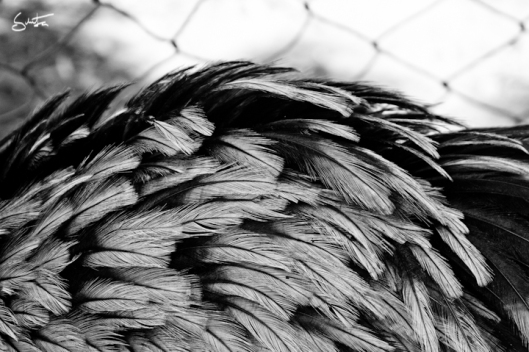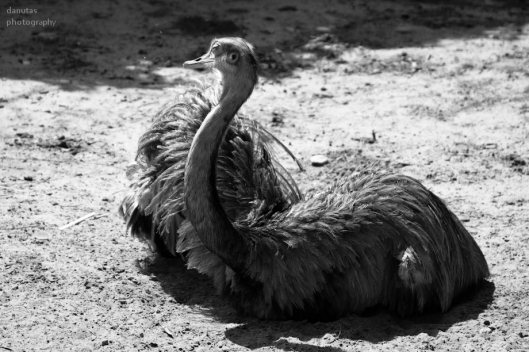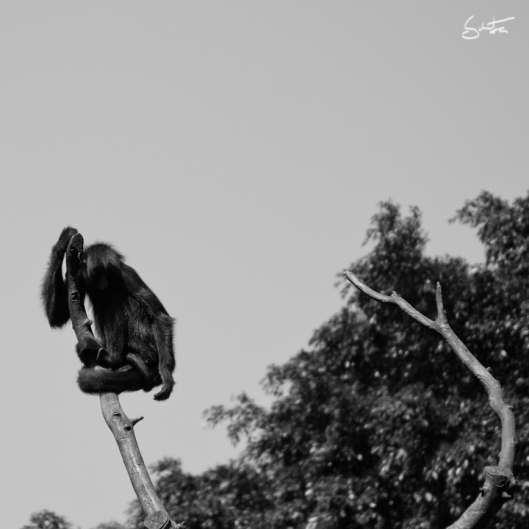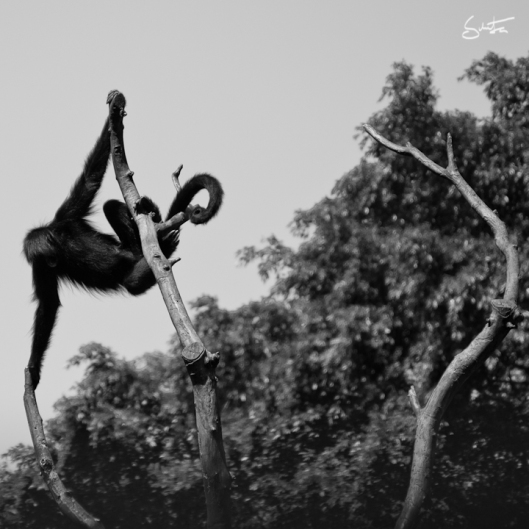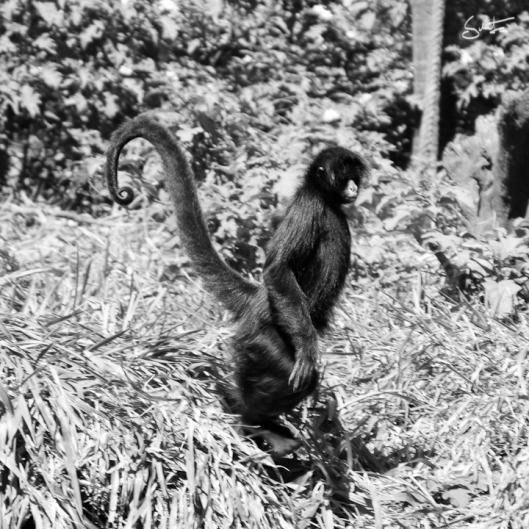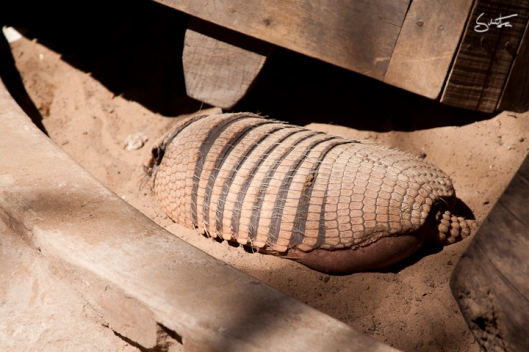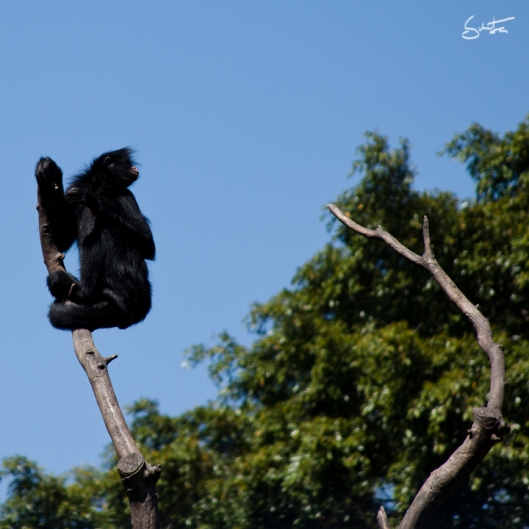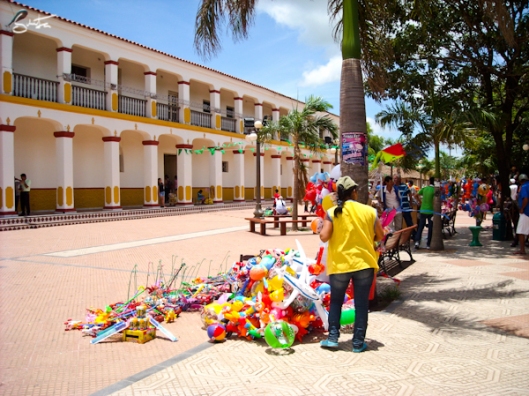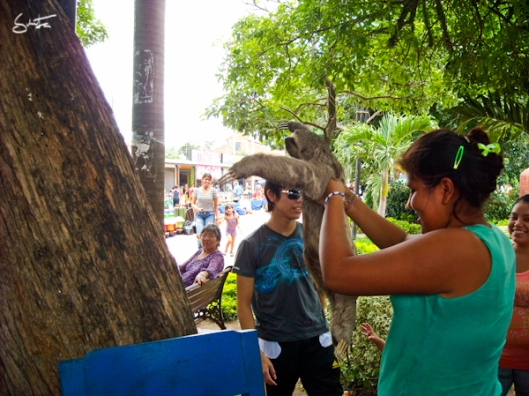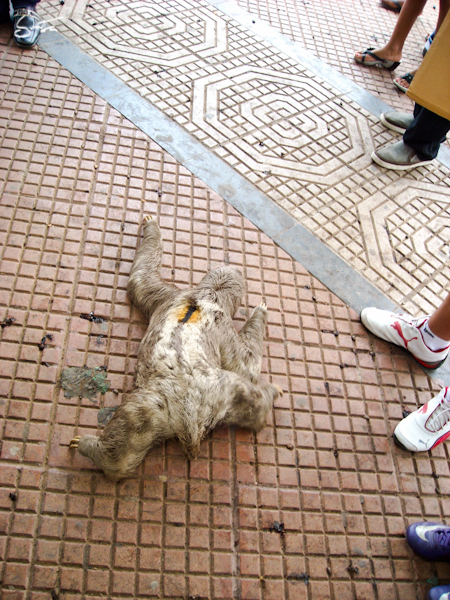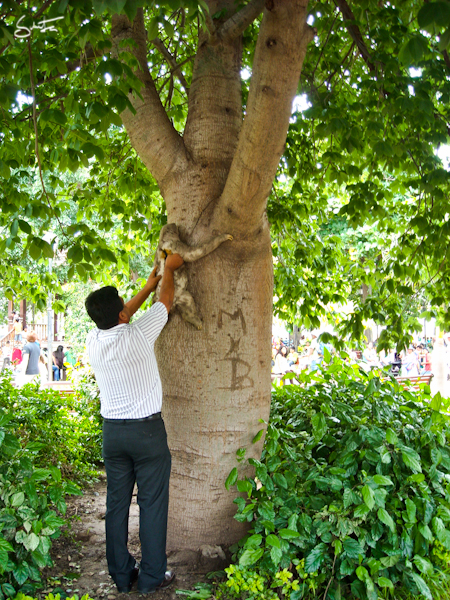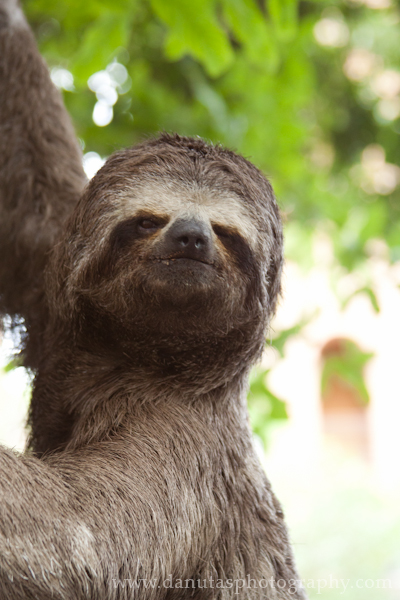
Mimo pewnego podobienstwa do swini, tapir nalezy do tej samej grupy ssakow, co nosorozec i kon. Posiada krotka trabe, ktora powstała z przeksztalconego nosa i wargi gornej, oraz bardzo krotki ogon. Konczyna tylna tapira posiada trzy, a przednia cztery palce, kazdy zakonczony kopytem.
Despite some physical similarities to a pig, tapir belongs to the same group of mammals as rhino and horse. It has a short snout and a very short tail. It has splayed, hooved toes, with four toes on the front feet and three on the back feet, which help it to walk on muddy and soft ground.
Tapiry żyją glownie w podmoklych, bagnistych lasach tropikalnych Poludniowej i Centralnej Ameryki oraz Poludniowo-Wschodniej Azji. Tapiry nizinne, zwane rowniez brazylijskimi, to największe ssaki lądowe, zyjace w Ameryce Poludniowej, dorastajace nawet do 300 kg. Zwierzeta te maja krotka brazowa siersc, tak rozna od tapira malezyjskiego, ktory jest bialo-czarny, czy tapira gorskiego, pokrytego welnistym futrem. Male, niezaleznie od rodzaju, maja prozkowana siersc z centkami, dla kamuflazu. Cecha charakterystyczna osobnikow meskich jest zas bardzo dlugi w stosunku do wielkosci ciala, penis. Naprawde, nie da sie go nie zauwazyc!
Tapirs mostly inhabit jungle and forest regions of South America, Central America, and Southeast Asia. Lowland tapirs, also known as Brazilian tapirs, are the largest land mammals that live solely in South America, growing up to 300 kg. These animals have short brown fur, so different to the Malaysian tapir, which is black&white and mountain tapir, covered with woolly fur. Baby animals, regardless of the type, have stripy and spotty coats for camouflage. Male adults have exceptionally long penises comparing to their body size. Really, it’s impossible not to notice it!

Tapiry prowadza samotny tryb zycia i dozywaja 25 – 30 lat (na wolnosci i w zoo). Zywia sie glownie owocami i liscmi; aktywne sa przewaznie w nocy, z wyjatkiem andyjskiego tapira gorskiego. Dorosle tapiry maja niewielu wrogow – grubsza skora na szyi i plecach, chroni je przed atakami jaguarow czy krokodyli. Potrafia rowniez szybko biegac i dobrze plywac!
Tapirs lead solitary lives and live up to 25 – 30 years (in the wild and in zoos). They feed on fruit and leaves, and are mostly active at night, with the exception of the Andean mountain tapir. Adult tapirs have few enemies – thicker skin on the neck and back protects them from attacks of jaguars and crocodiles. They are also very fast runners and good swimmers!
Jedynym powaznym zagrozeniem dla wszystkich rodzajow tapira jest czlowiek, ktory poluje na jego mieso, skore, oraz zawlaszcza zamieszkale przez tapiry tereny. Tapiry sa przewaznie niesmiale, przekladajace ucieczke nad konfrontacja z drapieznikiem, ale zaatakowane lub zaskoczone potrafia sie bronic. Maja bardzo mocne szczeki, wiec karmic ich z reki raczej nie wypada. Chyba, ze w zoo w Santa Cruz de la Sierra:)
Human is the only serious threat to all types of tapirs – hunting for meat and skin has substantially reduced their numbers and, more recently, habitat loss has resulted in the conservation watch-listing of all four species. Tapirs are mostly timid and likely to avoid confrontation in favour of running from predators, hiding or, if possible, submerging themselves in nearby water until a threat is gone. But attacked or surprised, they know how to defend themselves. They have very strong jaws, so it isn’t advisable to feed them by hand, unless you are in Santa Cruz de la Sierra’s zoo :)

Ciekawostka jest, iz w folklorze chinskim i japonskim tapir – zwany BAKU, zjada ludzkie koszmary nocne. Niech wiec przysnia sie wam tapiry:)
Interestingly, in Chinese and Japanese folklore, tapir – like creature – called BAKU, eats human nightmares. Therefore, I wish you dreams full of tapirs!
Sources: Wikipedia and livescience.com.

